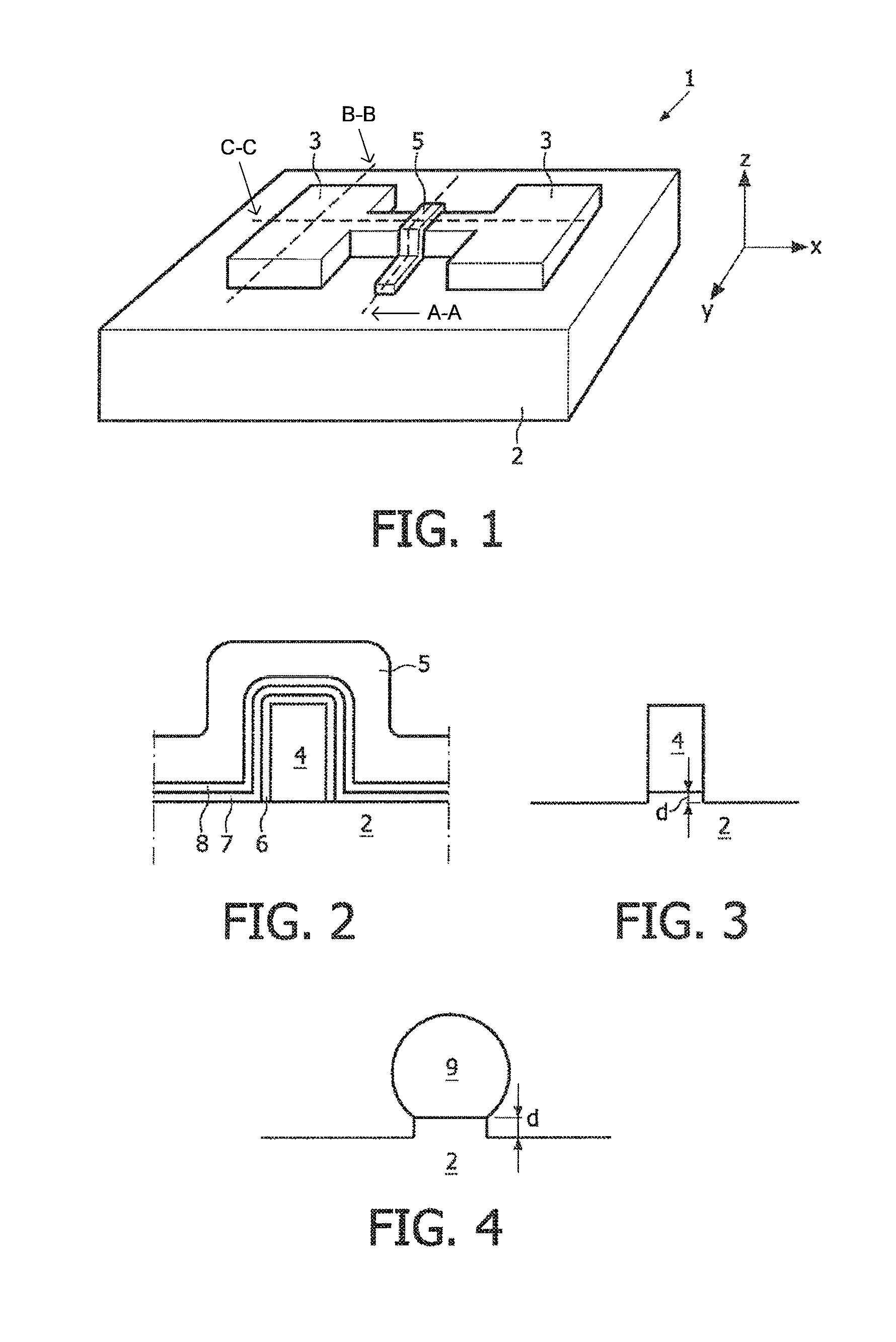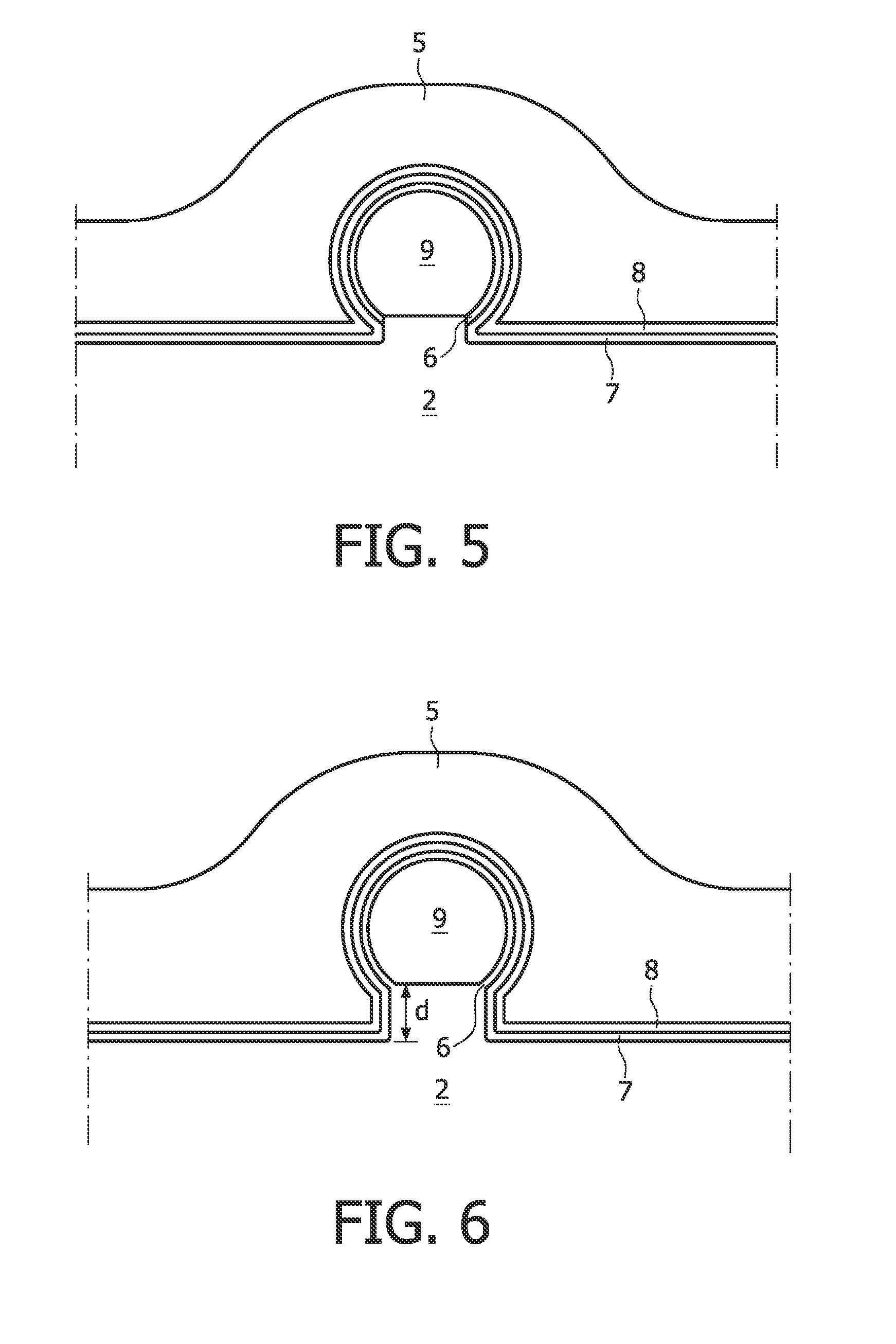Non-volatile memory device
a non-volatile memory and device technology, applied in the direction of semiconductor devices, basic electric elements, electrical apparatus, etc., can solve the problems of small variation of oxide thickness, affecting the tunneling of electrons through the bottom oxide, and hardly scaling beyond the 45 nm node of planar nvm devices, so as to reduce the variation of electronic characteristics
- Summary
- Abstract
- Description
- Claims
- Application Information
AI Technical Summary
Benefits of technology
Problems solved by technology
Method used
Image
Examples
second embodiment
[0089]FIG. 7 shows a cross-sectional view of the finFET-based non-volatile memory device according to the present invention.
[0090]In FIG. 7 entities having the same reference number refer to identical entities as shown in the preceding Figures.
[0091]The cross-section of FIG. 7 is taken along a same line as line A-A, across the gate portion of the finFET-based memory device.
[0092]In this second embodiment, the finFET-based memory device is arranged on a monocrystalline surface layer of an SOI substrate.
[0093]The rounded fin body 9 is free-standing. That is, the circumference of the rounded fin body is not in direct contact with the insulator layer 2. Thus, the rounded fin body 9 can be completely surrounded by the charge trapping stack 6, 7, 8. The full circumference of the rounded fin body 9 is encompassed by the charge trapping stack 6, 7, 8. The charge trapping stack 6, 7, 8, itself is encompassed by the gate 5.
first embodiment
[0094]It is noted that the free hanging fin shown in FIG. 7 can be obtained by largely following the method as discussed above with regard to the Then, when the recess level d is extended (see FIG. 6), the etching is continued to a level where the silicon dioxide under the silicon fin is completely removed, allowing the fin to be free-hanging.
[0095]This extended etching process can be achieved by combining a first step of anisotropic dry etching to partly recess the oxide adjacent to the fin with a second step of isotropic dry etching, which removes the oxide below the fin. Alternatively, the second step may be a wet oxide etching process (e.g. with a HF solution).
third embodiment
[0096]To prevent release of the free hanging Si fin from the substrate, a same construction may be used as is explained below with regard to a finFET-based non-volatile memory device according to a
[0097]According to the first and second embodiments the finFET-based non-volatile memory device is formed on an SOI wafer, while in a third embodiment the finFET-based memory device is formed on a monocrystalline silicon substrate with a buried SiGe layer. Moreover, in accordance with the third embodiment, the fin is free-hanging as shown in FIG. 7. The method of forming the finFET-based non-volatile memory device according to the third embodiment will be illustrated below.
[0098]FIG. 8 shows a second cross-sectional view of the finFET-based non-volatile memory device according to the second embodiment.
[0099]The cross-section of FIG. 8 is taken along a same line as line B-B, across the source / drain region 3, S, D of the finFET-based memory device.
[0100]The source / drain regions 3, S, D are f...
PUM
 Login to View More
Login to View More Abstract
Description
Claims
Application Information
 Login to View More
Login to View More - R&D
- Intellectual Property
- Life Sciences
- Materials
- Tech Scout
- Unparalleled Data Quality
- Higher Quality Content
- 60% Fewer Hallucinations
Browse by: Latest US Patents, China's latest patents, Technical Efficacy Thesaurus, Application Domain, Technology Topic, Popular Technical Reports.
© 2025 PatSnap. All rights reserved.Legal|Privacy policy|Modern Slavery Act Transparency Statement|Sitemap|About US| Contact US: help@patsnap.com



